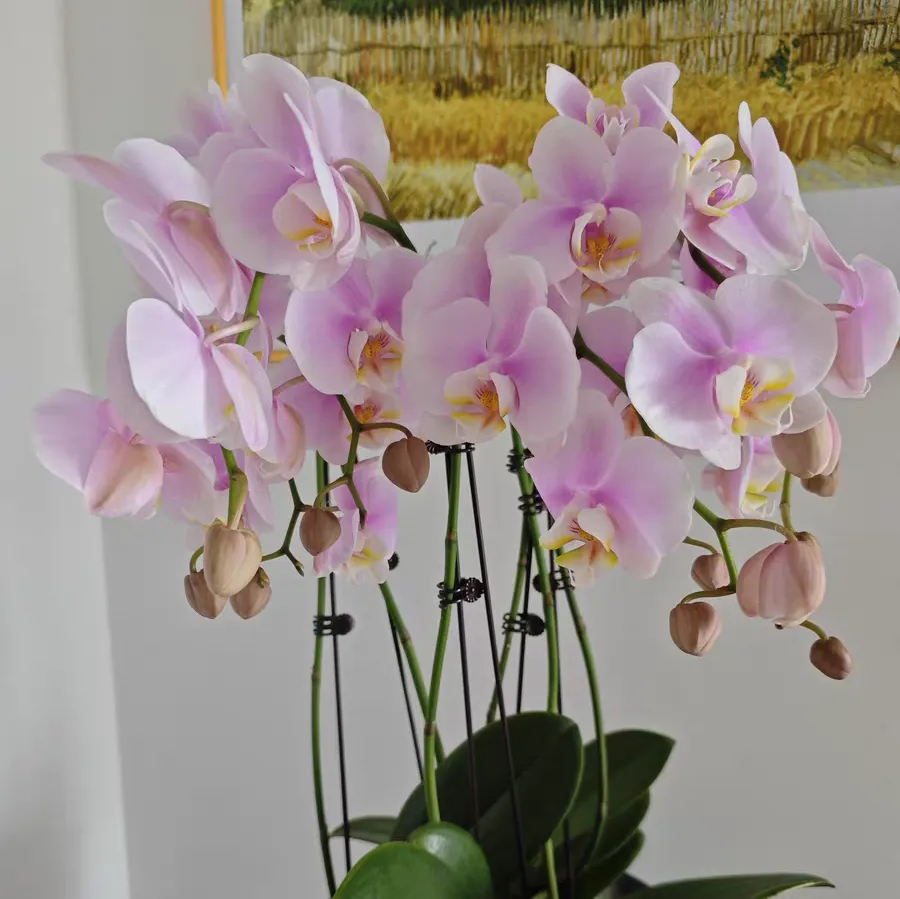If you want to make Phalaenopsis thrive and bloom profusely in humid areas, you must learn the wet cultivation method. However, if you use the wrong method, it is easy to kill the flowers. Now, I'll tell you how to operate specifically, along with some extremely important precautions.
## I. Wet Cultivation Methods
### (1) Pouring Method
When watering Phalaenopsis, don't pour water in a rush. Slowly pour water along the edge of the flower pot, and try not to touch the stem in the middle. Each time, pour 100 - 200ml of water, which is about half a bottle of mineral water. Remember, it's better to water less than too much. Another key point is that you mustn't pour water into the center of the leaves. If water accumulates in the center of the leaves, they will rot in a few days. It is best to water following the principle of "water thoroughly when the soil surface is dry", and water again when the soil surface is dry, repeating this cycle.
### (2) Absorption Method
When using sphagnum moss as the planting medium, find a deep pot, pour water into it, and place the Phalaenopsis pot in the water. When the sphagnum moss has absorbed half of the water, quickly take it out, and let it absorb the remaining water slowly by itself. Never soak it completely. If the roots are soaked in water all the time, the roots will rot in a few days, and it will be impossible to save them!
### (3) Pot Soaking Method
If you find that the leaves of Phalaenopsis are wilted and extremely thirsty, and you are using a well-drained planting medium like bark, you can try the pot soaking method. Find a container that is one size larger than the flower pot, pour water into it until the water level is the same as the soil in the flower pot. Place the flower pot in the water and soak it. Take it out when the soil is completely wet. Be careful not to let the leaves get wet. After soaking, place it in a ventilated area to let the excess water evaporate quickly.
## II. Wet Cultivation Conditions
### (1) Strong Roots + Good Air Permeability
The major prerequisite for wet cultivation is that Phalaenopsis should have healthy roots. If the roots are already black and rotten, the more you wet cultivate, the faster the plant will die. In addition, don't use ordinary soil for cultivation. It is recommended to use planting media with good air permeability such as sphagnum moss, bark pieces, and ceramsite, which are less likely to cause root rot.
### (2) Diffused Light + Good Ventilation
When growing Phalaenopsis at home, don't expose it to direct sunlight on the balcony, and don't leave it in a stuffy corner! Find a place with diffused light, such as near the window in the living room or on the north balcony, which is very suitable. Ventilation is also extremely important. If the air doesn't circulate, the water will dry slowly, and bacteria will easily appear. Black spots on the leaves and root rot are caused in this way.
### (3) Temperature
Don't wet cultivate when the temperature is lower than 15°C. Phalaenopsis is afraid of cold. If you water too much in a low-temperature environment, it is very easy to get frostbitten. It is best to move it indoors in winter. When using air conditioning or heating, don't place it too close. Keep the temperature above 15°C, and it can grow at ease.
## III. Daily Maintenance
In addition to watering, there are many small details in daily maintenance. Check the leaves and roots every week. If you find black spots or root rot, deal with them immediately. Don't fertilize too frequently. Use diluted nutrient solution and water it once every half month. Strong fertilizer is likely to burn the roots. In addition, pay more attention during the season change. Adjust the watering frequency according to the temperature and humidity. Only by taking good care of it can Phalaenopsis bloom every year.
If you master these methods, even beginners can grow Phalaenopsis beautifully!
How to Grow Phalaenopsis in Humid Areas

Share with
Tagged in :




Leave a Reply